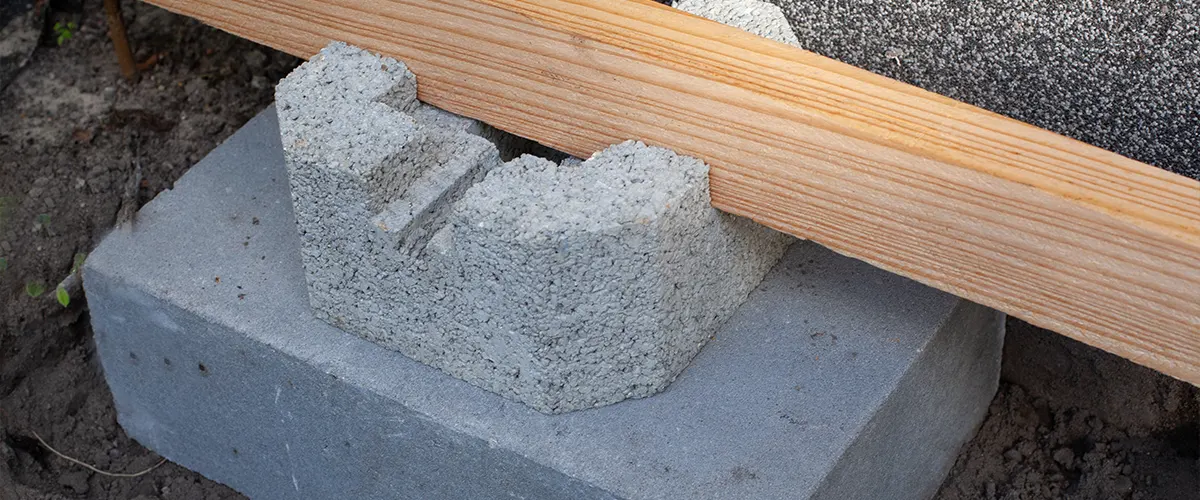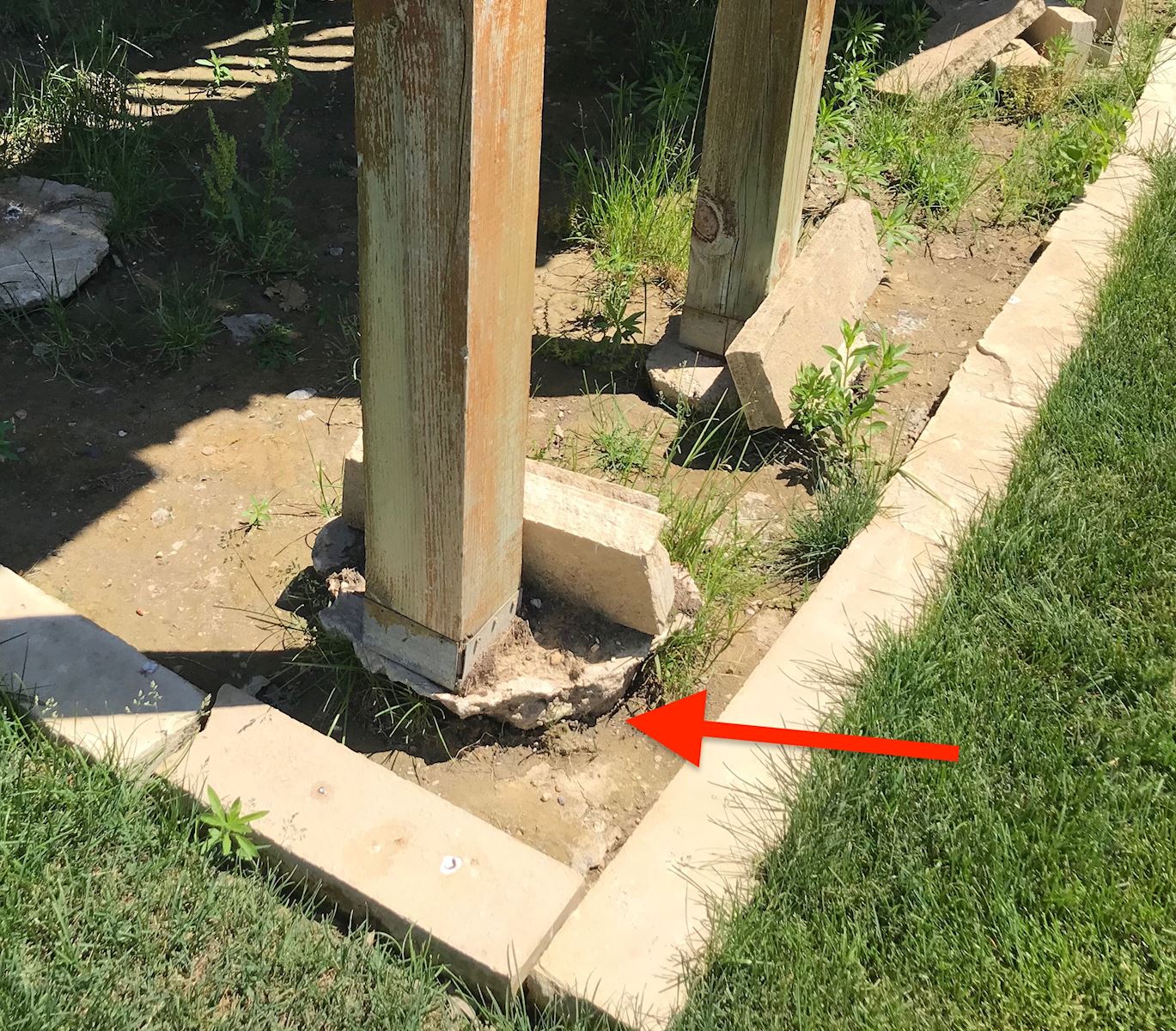A Solid Structure for Your Oasis: Checking Out the Value of Deck Footings in Outdoor Structures
Wiki Article
Professional Tips for Installing Deck Footings to Assistance Your Outdoor Area
When it concerns constructing a deck, one of one of the most important components to consider is the setup of correct footings. These grounds are the structure upon which your outside room will relax, providing stability and assistance for years to find. What precisely does it take to set up deck grounds appropriately? In this conversation, we will explore experienced tips and strategies that can assist make certain a sturdy and successful deck setup. From selecting the right kind of grounds to staying clear of common errors, we will supply you with the understanding and understandings you need to confidently start your deck-building journey. Let's dive right in and find the trick to a solid and long-lasting outdoor space.Significance of Proper Deck Grounds
Correct deck grounds are necessary for ensuring the security and long life of your outside space. When constructing a deck, it is crucial to pay attention to the foundation on which it will certainly relax. Deck footings supply the needed assistance for the entire structure and aid disperse the weight uniformly - Deck Footings. Without solid and properly mounted footings, your deck may become unsteady, resulting in safety risks and pricey repair services.
Along with stability, correct deck grounds also add to the longevity of your outside area (Deck Footings). Grounds that are made and created to hold up against the elements and soil conditions in your location will help protect against the deck from settling or changing gradually. By making sure the grounds are properly sized and mounted, you can reduce the threat of damage to the deck framework, prolonging its lifespan and reducing the requirement for costly fixings or replacements

Selecting the Right Kind Of Grounds
When picking the suitable sort of footings for your deck, it is very important to take into consideration factors such as soil conditions, local building ordinance, and the overall style of your outside area. The kind of footing you pick will certainly play a vital duty in guaranteeing the security and longevity of your deck.One common kind of ground is the concrete ground. Concrete grounds are ideal for most soil conditions and offer exceptional assistance for decks.
In some cases, you may need to use specific footings, such as heap grounds or deep structures, if you are building a large or multi-level deck. These footings are developed to disperse the weight of the deck over a bigger location, making certain stability and stopping settling or sinking.
Before selecting a kind of footing, it is important to speak with local building codes and guidelines to ensure compliance. Furthermore, consider the layout and planned use of your exterior room. Variables such as the size, shape, and load-bearing demands of your deck will affect the sort of footing that is most appropriate.
Preparing the Ground for Footing Setup
To appropriately prepare the ground for footing setup, it is essential to examine the dirt problems and take needed actions to make sure security and resilience of the deck. The very first step is to excavate the area where the footings will certainly be mounted. The deepness of the excavation will depend on the frost line in your region and the specific demands of the deck design. It is necessary to get rid of any plant life, rocks, or debris from the excavation to make certain a solid structure.When the location has been excavated, the following action is to portable the soil. This can be done utilizing a plate compactor or by utilizing a hand tamper. Compacting the dirt aids to eliminate any type of gaps or air pockets, which can result in Deck Footings settling and instability in time.
After condensing the dirt, it is essential to lay a layer of gravel or smashed stone at the base of the excavation. This will certainly supply drainage and assistance to avoid water from pooling around the footings, which can lead to erosion and instability.
Step-by-Step Overview to Setting Up Deck Footings
After effectively preparing the ground for footing installation, the following step is to begin the procedure of installing deck footings. This step-by-step overview will certainly provide you with a clear understanding of exactly how to set up deck grounds for your exterior space.Figure out the location: Start by noting the placements of the deck footings utilizing stakes and string. Make sure that the places line up with the style and design of your deck.
Dig the holes: Use a message hole digger or an auger to dig the holes for the grounds. The deepness and diameter of the holes ought to be in accordance with regional building codes and the certain needs of your deck layout.
Level the holes: Utilize a degree to make certain that the openings are dug to the proper deepness and are level with each various other. (Deck Footings)
Include gravel: Place a layer of gravel at the base of each opening to enhance drainage and protect against the timber from deteriorating.
Place the footings: Place the footings right into the openings, ensuring they are level and plumb. Utilize a level and a determining tape to make sure precision.
Safeguard the footings: Put concrete into the holes around the grounds, loading them to the top. Utilize a message level to ensure the footings continue to be degree as the concrete sets.
Allow time for healing: Let the concrete remedy according to the producer's guidelines prior to waging the deck construction.
Common Mistakes to Stay Clear Of During Footing Installment
One crucial facet to think weblink about during the installation of deck grounds is preventing typical blunders that can jeopardize the stability and durability of your outdoor area. While deck grounds may feel like a simple and simple component of the construction process, neglecting certain variables can bring about expensive repair services and possible safety and security hazards down the line.
In addition, disregarding to install correct drainage measures can cause water to build up around the grounds, causing rot, decay, and the eventual weakening of the deck's structure. Additionally, utilizing the incorrect kind of footing product or failing to appropriately protect the footings can jeopardize their architectural stability.
To avoid these errors, it is essential to consult with an expert or adhere to industry guidelines to make sure correct ground installment. By doing so, you can ensure the stability and durability of your exterior room, providing a risk-free and delightful atmosphere for several years to come.
Conclusion
In final thought, setting up correct deck grounds is important for the security and long life of your exterior space. By choosing the best type of footings and appropriately preparing the ground, you can ensure a solid foundation for your deck. Complying with a step-by-step guide and preventing usual blunders throughout footing installation will additionally boost the resilience and safety and security of your deck.Proper deck grounds are essential for making sure the security and longevity of your outside area. The footings offer as a connection between the ground and the deck, permitting the weight of the deck and its occupants to be dispersed uniformly right into the soil.One typical kind of footing is the concrete ground. Place the grounds: Place the grounds into the holes, making certain they are degree and plumb. Safeguard the grounds: Put concrete into the holes around the grounds, filling them to the top.
Report this wiki page